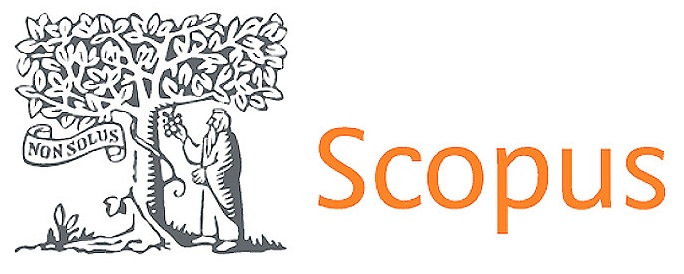A Bibliometric Analysis of Juvenile Crimes and Psychological Well-Being: Trends, Patterns, and Gaps in Research
DOI:
https://doi.org/10.56294/sctconf20251365Keywords:
Juvenile, Crimes, Psychological Well-Being, Mental Health, Bibliometric AnalysisAbstract
Introduction: Adolescent criminal behaviour is considered to be a serious global societal concern, with adverse physical and psychological effects for both the victims as well as the perpetrators. According to studies, incarcerated adolescents experience a greater risk of mental illnesses than the overall juvenile population. Approximately 14% to 20% of young individuals in the general population are diagnosed with a mental condition, with 9% to 13% experiencing severe emotional distress. The current study aims to find the patterns of previously existing literature associating Juvenile Crimes and Psychological Well-Being.
Methods: After screening the units through a Prisma model, 1068 documentary units were included for further analysis. The documentary units were analysed using VOS Viewer Software and Hazing’s Publish and perish software.
Results: From the results it was found that the United States secured the top ranking in terms of the number of papers and citations with over 862 papers and 26544 citations with medicine being the top contributing area. The current study also identified top authors, journals and research papers that were the major contributors in the area. Further bibliometric analysis showed the collaboration between different authors, journals, themes and organizations.
Conclusion: The study gives an overall understanding about the various research as well as various aspects with which researchers have studied the current area. The research gap is evident from the number of publications as well as the areas in which the research has been looked into which thereby lays the platform for future studies
References
1. McGue M, Iacono WG. The association of early adolescent problem behavior with adult psychopathology. Am J Psychiatry. 2005;162(6):1118–24. http://dx.doi.org/10.1176/appi.ajp.162.6.1118 DOI: https://doi.org/10.1176/appi.ajp.162.6.1118
2. Scott ES, Steinberg L. Adolescent development and the regulation of youth crime. Future Child. 2008 Autumn;18(2):15–33. http://dx.doi.org/10.1353/foc.0.0011 DOI: https://doi.org/10.1353/foc.0.0011
3. Ortega-Campos E, García-García J, Gil-Fenoy MJ, Zaldívar-Basurto F. Identifying risk and protective factors in recidivist juvenile offenders: A decision tree approach. PLoS One. 2016;11(9):e0160423. http://dx.doi.org/10.1371/journal.pone.0160423 DOI: https://doi.org/10.1371/journal.pone.0160423
4. Ohchr.org. [cited 2024 Dec 8]. https://www.ohchr.org/en/instruments-mechanisms/instruments/united-nations-guidelin
5. Cocozza JJ, Skowyra K. Youth with mental disorders: Issues and emerging responses. Juvenile Justice. 2000;7:3–13 DOI: https://doi.org/10.1037/e379712004-001
6. Gerard FJ, Jackson V, Chou S, Whitfield KC, Browne KD. An exploration of the current knowledge on young people who kill: A systematic review. Aggress Violent Behav. 2014;19(5):559–71. http://dx.doi.org/10.1016/j.avb.2014.07.002 DOI: https://doi.org/10.1016/j.avb.2014.07.002
7. Young S, Greer B, Church R. Juvenile delinquency, welfare, justice and therapeutic interventions: a global perspective. BJPsych Bull. 2017;41(1):21–9. http://dx.doi.org/10.1192/pb.bp.115.052274 DOI: https://doi.org/10.1192/pb.bp.115.052274
8. Prisma-statement.org. [cited 2024 Dec 8]. Available from: http://www.prisma-statement.org/PRISMAStatement/
9. Scopus. (n.d.). Scopus Database. Elsevier. Retrieved from https://www.scopus.com
10. Teplin LA, Abram KM, McClelland GM, Dulcan MK, Mericle AA. Psychiatric disorders in youth in juvenile detention. Arch Gen Psychiatry. 2002;59(12):1133–43. http://dx.doi.org/10.1001/archpsyc.59.12.1133 DOI: https://doi.org/10.1001/archpsyc.59.12.1133
11. Frick PJ, Ray JV, Thornton LC, Kahn RE. Can callous-unemotional traits enhance the understanding, diagnosis, and treatment of serious conduct problems in children and adolescents? A comprehensive review. Psychol Bull. 2014;140(1):1–57. http://dx.doi.org/10.1037/a0033076 DOI: https://doi.org/10.1037/a0033076
12. Nation M, Crusto C, Wandersman A, Kumpfer KL, Seybolt D, Morrissey-Kane E, et al. What works in prevention. Principles of effective prevention programs. Am Psychol. 2003;58(6–7):449–56. http://dx.doi.org/10.1037/0003-066x.58.6-7.449 DOI: https://doi.org/10.1037/0003-066X.58.6-7.449
13. Loeber R, Farrington DP. Young children who commit crime: epidemiology, developmental origins, risk factors, early interventions, and policy implications. Dev Psychopathol. 2000 Autumn;12(4):737–62. http://dx.doi.org/10.1017/s0954579400004107 DOI: https://doi.org/10.1017/S0954579400004107
14. Ko SJ, Ford JD, Kassam-Adams N, Berkowitz SJ, Wilson C, Wong M, et al. Creating trauma-informed systems: Child welfare, education, first responders, health care, juvenile justice. Prof Psychol Res Pr. 2008;39(4):396–404. http://dx.doi.org/10.1037/0735-7028.39.4.396 DOI: https://doi.org/10.1037/0735-7028.39.4.396
15. Garland AF, Hough RL, Mccabe KM, Yeh M, Wood PA, Aarons GA. Prevalence of psychiatric disorders in youths across five sectors of care. Journal of the American Academy of Child & Adolescent Psychiatry. 2001 Apr 1;40(4):409–18. Available from: https://doi.org/10.1097/00004583-200104000-00009 DOI: https://doi.org/10.1097/00004583-200104000-00009
16. Farmer EMZ, Burns BJ, Phillips SD, Angold A, Costello EJ. Pathways into and through mental health services for children and adolescents. Psychiatric Services. 2002 Dec 31;54(1):60–6. Available from: https://doi.org/10.1176/appi.ps.54.1.60 DOI: https://doi.org/10.1176/appi.ps.54.1.60
17. Abram KM, Teplin LA, McClelland GM, Dulcan MK. Comorbid psychiatric disorders in youth in juvenile detention. Archives of General Psychiatry. 2003 Nov 1;60(11):1097. Available from: https://doi.org/10.1001/archpsyc.60.11.1097 DOI: https://doi.org/10.1001/archpsyc.60.11.1097
18. Garland AF, Lau AS, Yeh M, McCabe KM, Hough RL, Landsverk JA. Racial and ethnic differences in utilization of mental health services among High-Risk youths. American Journal of Psychiatry. 2005 Jul 1;162(7):1336–43. Available from: https://doi.org/10.1176/appi.ajp.162.7.1336 DOI: https://doi.org/10.1176/appi.ajp.162.7.1336
19. Dierkhising CB, Ko SJ, Woods-Jaeger B, Briggs EC, Lee R, Pynoos RS. Trauma histories among justice-involved youth: findings from the National Child Traumatic Stress Network. European Journal of Psychotraumatology. 2013 Jul 16;4(1). Available from: https://doi.org/10.3402/ejpt.v4i0.20274 DOI: https://doi.org/10.3402/ejpt.v4i0.20274
20. MHF (Mental Health Foundation). (2008). What works for you? London: MHF.
21. Youth violence. Who.int. [cited 2024 Dec 8]. Available from: https://www.who.int/news-room/fact-sheets/detail/youth-violence
22. Bhardwaj RK. Juvenile Delinquency in India: A study. Journal of Research in Humanities and Social Science. 2021;9(11):69–76
23. Jaworska N, MacQueen G. Adolescence as a unique developmental period. J Psychiatry Neurosci. 2015;40(5):291–3. http://dx.doi.org/10.1503/jpn.150268 DOI: https://doi.org/10.1503/jpn.150268
24. Trauma. (n.d.). https://www.apa.org. https://www.apa.org/topics/trauma
25. Przeperski J, Owusu SA. Children and the child welfare system: Problems, interventions, and lessons from around the world. Child Adolesc Social Work J. 2021;38(2):127–30. http://dx.doi.org/10.1007/s10560-021-00740-5 DOI: https://doi.org/10.1007/s10560-021-00740-5
20. James N. Offender reentry: Correctional statistics, reintegration into the community, and recidivism. 2015.
26. Glaze LE, Kaeble D. Correctional populations in the United States. 2013
27. UNESCO. Unesco.org. [cited 2024 Dec 8]. http://www.unesco.org/new/en/social-and-human-sciences/themes/youth/youth-definition/
Downloads
Published
Issue
Section
License
Copyright (c) 2025 Shankar Kumar , Nellore Pratika Reddy , Harish, Agalya (Author)

This work is licensed under a Creative Commons Attribution 4.0 International License.
The article is distributed under the Creative Commons Attribution 4.0 License. Unless otherwise stated, associated published material is distributed under the same licence.



